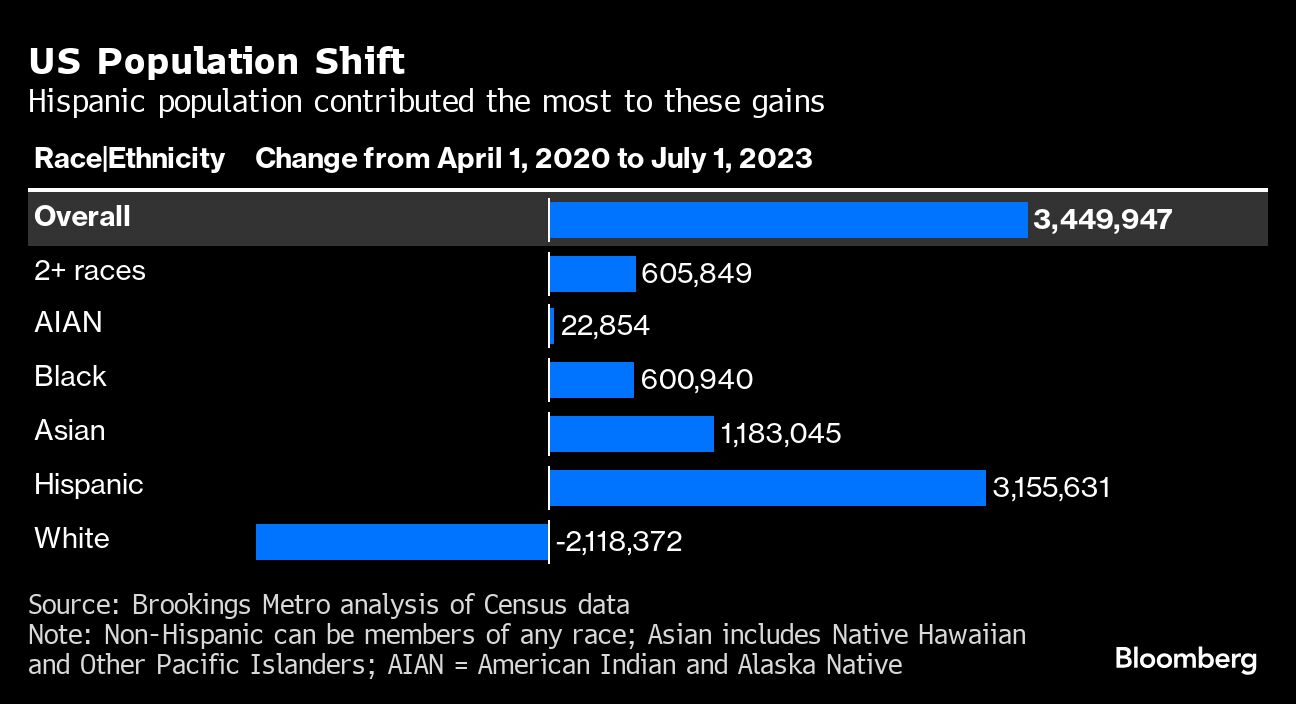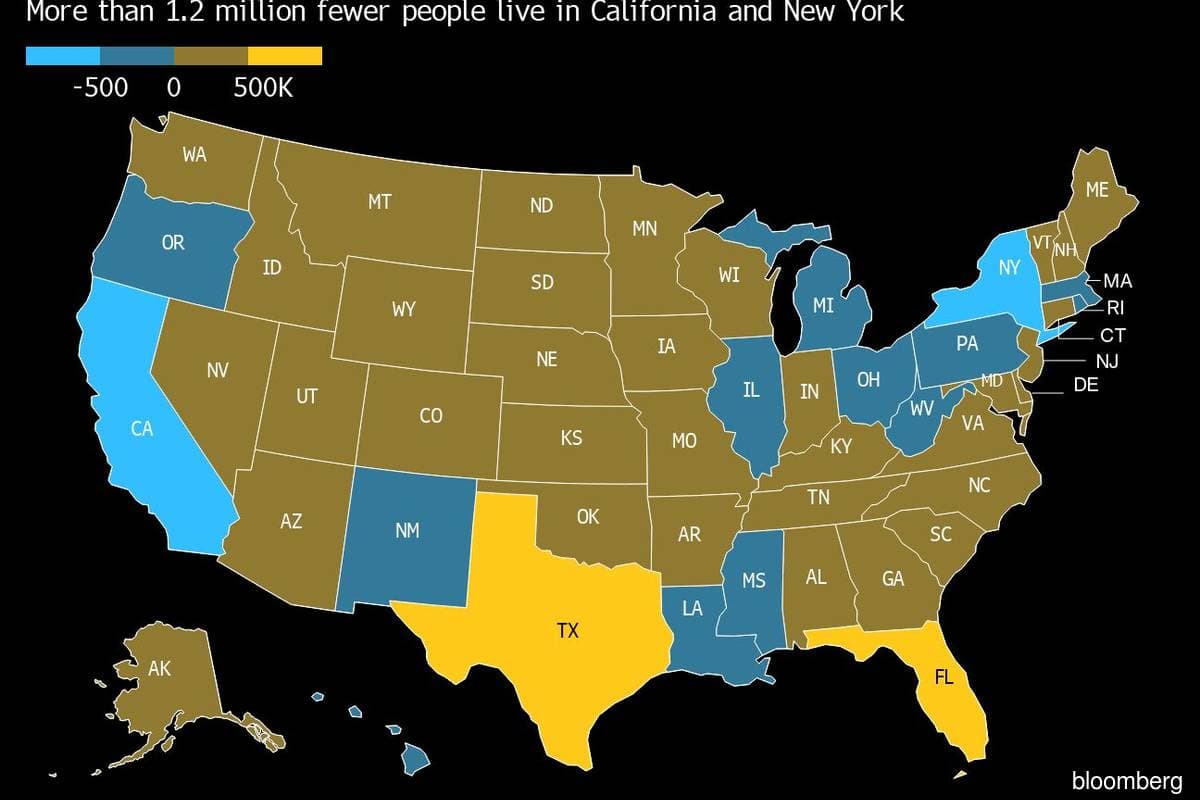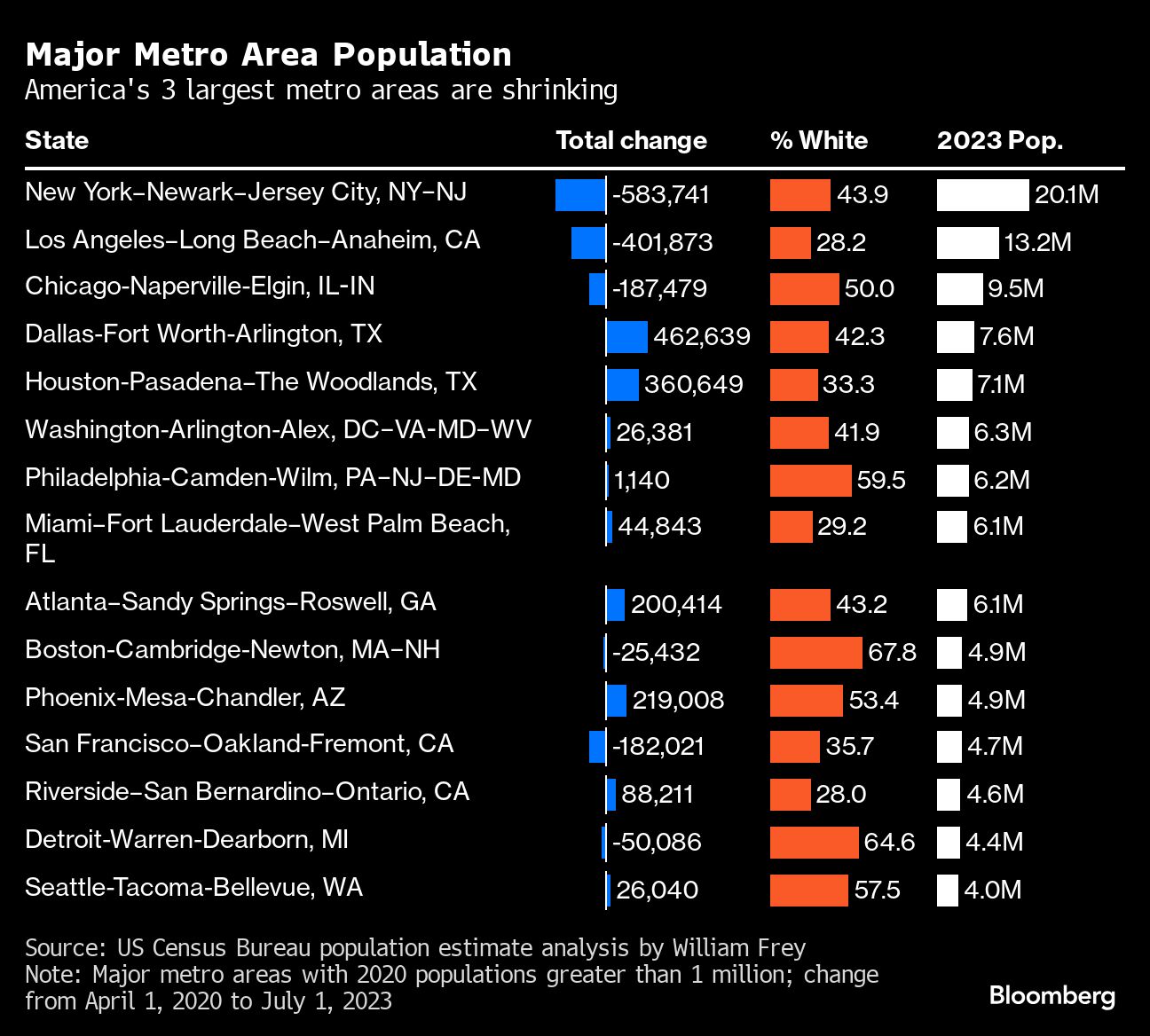Demographics of the United States
An uptick in immigration alongside shifts in both births and deaths from April 2020 to July 2023 has contributed to a “diversity explosion,” according to William Frey, a demographer and senior fellow at the Brookings Institution.
Overall, the US population increased by 3.4 million over the period, Frey’s analysis showed. At the same time, the White population declined by 2.1 million, and the shrinking group of White youth drove a 1.6 million drop in the number of Americans under the age of 18.
The smaller White population is mostly the result of more deaths than births. Due to an ageing population, there are proportionately fewer White women who are of childbearing age and fertility rates are lower compared to other groups.
Looking ahead, Hispanic and other non-white groups are projected to make up 44% of the population in 2030, with Hispanic residents comprising one fifth of the total. By 2050, one-quarter of the population will be Hispanic residents and more than half will be non-white groups.
Overall, 15 states saw a decline in population, led by California and New York, which lost a combined 1.2 million residents during the three-year period.
The vast majority of states saw their youth population decline. In California there are close to 500,000 fewer children than pre-pandemic, and New York has 272,000 fewer.
Meanwhile, Florida and Texas each gained about 100,000 young people.
The population shrank in six of the 15 largest metro areas. The New York City metro area had the biggest overall drop.


